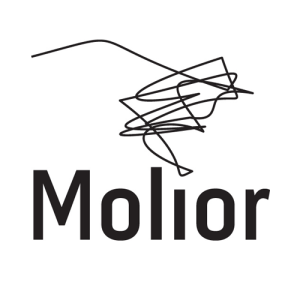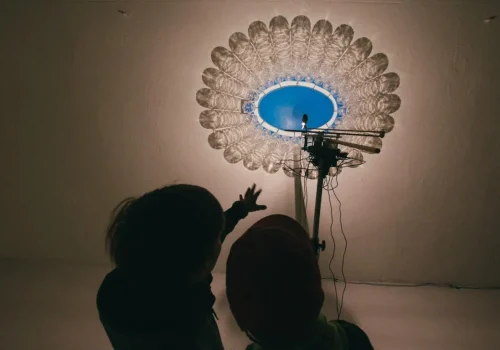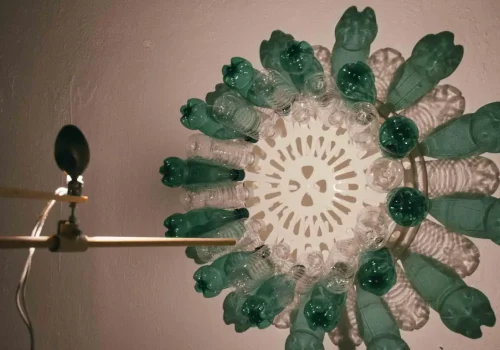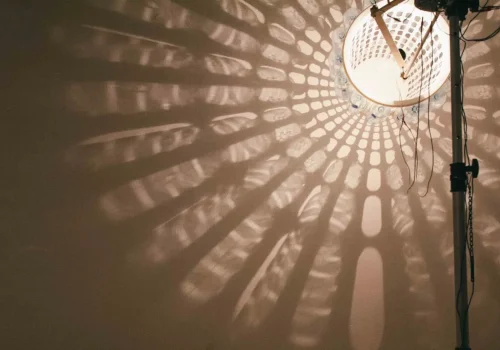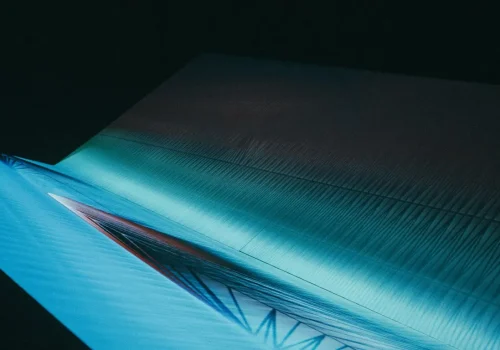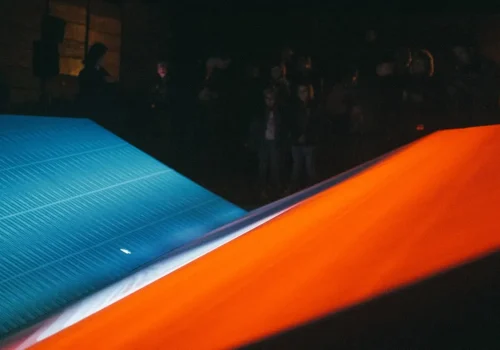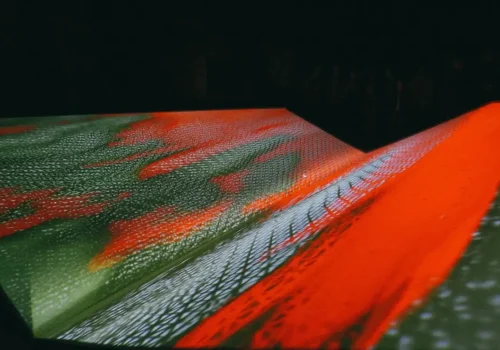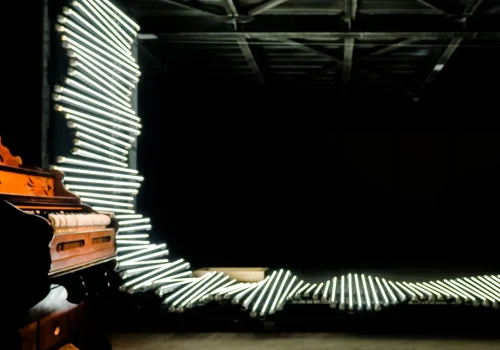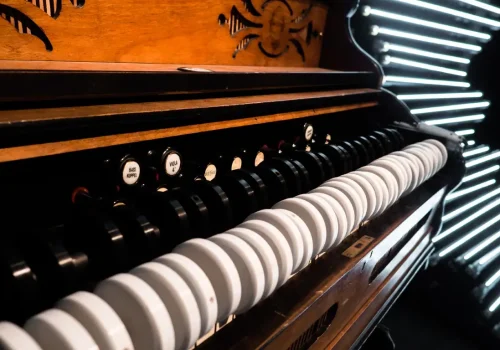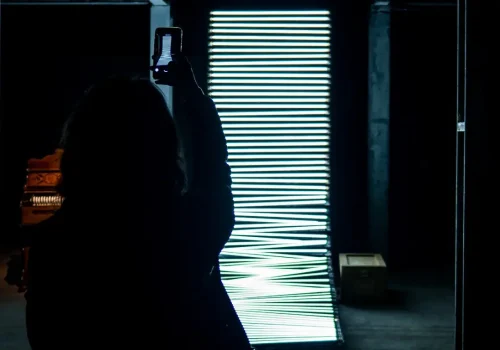Biela Noc 3rd edition in Bratislava (Slovakia)
Bratislava (Slovakia)
From October 7th to October 8th, 2017
Biela Noc is the biggest and most visited contemporary art festival in Slovakia.
Founded in 2010 in Košice then established in 2015 in Bratislava, Biela Noc embodies the desire to (re)discover an urban environment which is given a new dimension through art.
Molior has set up a new coproduction with the Biela Noc organization in Slovakia as the second of a total of three major events that have each presented several wide-ranging light works in public space at the scale of the city. The works by Diane Landry, Maotik and Robyn Moody have then been shown as part of the Slovak Bratislava nuit blanche october 7th, 2017.
This project has received support from the following institutions: the Conseil des arts et des lettres du Québec, and the Canada Council for the Arts. Molior would like to thank the Conseil des arts de Montréal and Les offices jeunesse internationaux du Québec (LOJIQ) for their invaluable collaboration.
[Molior]
Artists & works
Diane Landry
Mandala Labrador, Mandala Naya and Mandala Perrier in the Blue Decline series
2002
Various bottles of water, motors, selected object, aluminum, wood, halogen lighting, tripod.
Description of the work
3 different Mandalas are part of Blue Decline installation. Deriving from the Sanskrit word for ‘circle,’ a mandala is an artistic representation of the cosmos, and is used in Eastern religious traditions as a focus for meditation. Using the now-ubiquitous plastic water bottle, Landry’s mandalas conjure shadow versions of this spiritual symbol. Each of Landry’s mandalas is created from only one kind of bottle, and bears the name of the brand of water it once held, i.e., Mandala Labrador. In Mandala Naya, a laundry basket ringed with water bottles is attached to the wall. A tripod, supporting a light attached to a mechanized arm, stands in front of the basket. As the arm moves forward, the light shines through the holes of the basket and through the water bottles, creating a startlingly beautiful shadow that stretches across the wall. This is the reward for watching Mandala Naya for its entire one-minute cycle; just as with traditional mandalas, the time required to experience the work makes it an object of contemplation.”
Flying School and Mandala Naya (excerpt), brochure, Rice Gallery, 2005.
Created during a residency at Cypres, Marseille, in exchange with La Chambre Blanche, Quebec City.
Biography
Diane Landry lives and works in Québec City. Since 1987, her works have travelled widely across Canada and in major cities in the USA, Mexico, Argentina, many European countries, Australia and China. Her works have been discussed in numerous publications and recognized by important awards in Québec as well as in the United States. She is the first recipient of the prestigious Giverny Capital Prize, a distinction awarded to a visual artist from Québec. She has been an artist in residence in many centres in Canada, the USA, France, Italy and Argentina. She has just completed a six-month stay in the Studio du Québec in New York, sponsored by the Conseil des arts et des lettres du Québec. Diane Landry holds a MA from Stanford University, California. The artist is represented by SolwayJones Gallery in Los Angeles.
Maotik
Aeryon
2017
2 cpu, 1 sound card, 4 speakers, 4 audio cables, 2 hdmi cables, 2 projectors 8000 lumens, 1 wood structure, grey + black painting, 2 strip leds, 1 pixel pusher, 1 controller dmx.
Description of the work
Aeryon is an installation that recreates the beauty of an aerial landscape view through an advanced navigation visual system which analyses data sources. It is an artistic interpretation of a surveillance drone vision in which the story line evolves according to the drone’s departure location.
The piece’s story line evolves gradually to create an environment in which various degrees of immersion modify the perception of the physical space it unfolds in. The multimedia environment invites the audience to live a contemplative experience in which the visual composition changes according to the virtual drone location, thus providing an ever-changing experience.
The installation is an “open form” that is unique and inimitable. It behaves as a system with a random creation process, in a range of settings defined by the activity of the real-time data analysis. Surround sound translates the images into a sonic experience that will plunge the public into the heart of this electronic landscape. All patterns such a mountains, oceans, forests or cities have a specific visual features. Other information such as the size of the cities, the number of inhabitants, wind force or weather forecasts are some parameters that determine the visual composition.
A production of ENCAC.
Biography
Mathieu Le Sourd, also known as MAOTIK, is a French digital artist focused on creating immersive environments, interactive installations, digital architectural sculptures, and audiovisual performances which play at the intersection of art, science, and technology.
The artist studied Digital Media Production at the University of the Arts in London, he holds a Master’s Degree in Digital Arts from Pompeu Fabra University in Barcelona, and he worked as a professor with a focus on interactive design, generative design, augmented and virtual reality environments at the CODE university in Berlin. MAOTIK best known for using computer-generated algorithms to create reality-shifting environments, he performs with his own audiovisual tools by generating graphic elements in real-time, in order to transform the perceptions of space. In constant collaboration with artists from other disciplines such as music, dance, theater, and architecture, but also with scientists, he investigates the relation between arts and technology, exploring new artistic languages.
Over the last few years, his work has been presented at international festivals and institutions worldwide, such as Mutek, Sonar, Oi Futuro in Rio, Art Basel, Frieze London, FIAC Paris, Signal Festival in Prague, the British Film Institute in London, ARS Electronica in Linz, Miraikan Science Museum in Tokyo, B39 in Seoul, Funkhaus in Berlin or Philharmonie in Paris.
Robyn Moody
Wave Interference
2012-2013
Fluorescent lamps, PVC, Motor, Organ.
Description of the work
The kinetic installation Wave Interference unfolds in the shape of a light wave. 88 neon lights appear to float to the sounds of an old organ. The wave fluctuates slowly, in a fluid movement, and it captivates through optical illusion effects. It invites one to undergo an experience of amplified sensorial dimensions in a mysterious atmosphere. It takes us into a suspended time, towards a meditative and fascinating state.
It not only has the power to transform our relationship to the site where it is presented, it also reveals unsuspected states both in our perceptual experience and on the level of the phenomena in our midst. Wave Interference refers to electromagnetic waves and their ubiquity.
Moody explains that we are typically oblivious to these waves until we have some detector (such as our eyes) to alert us to their presence. That we have the ability, through the use of these organic detectors on our faces, to effortlessly filter a portion of this mess of frequencies into a coherent image is a fact worthy of awe. The waves from every radio station, mobile phone call, wifi signal (and countless others) are around us whether we are detecting them or not.
Funding credits to: The Alberta Foundation for the Arts, The Canada Council for the Arts.
Construction credits to: Rachael Chaisson, Ann Thrale, Rita McKeough, Tristan Zastrow.
Biography
Robyn Moody (b. 1975, Lethbridge, Canada) lives and works in Calgary, Canada. He takes a multifaceted approach to art-making, lately focussed on electronics, mechanics, installation, sound, and sculpture. Often humorous, often strikingly beautiful, and often hiding a dark secret, Moody’s work explores (in whole or in part) the complex relationships between technological advances, human belief and interpretations of the world, and humanity’s relationship with science, politics, and nature. In the past decade, he has shown his work regularly across Canada, Mexico, Scandinavia and Europe. Notable recent examples include Transmediale (Berlin, DE), Lighting Guerrilla (Ljubljana, Slovenia), Werkleitz Festival (Halle, DE), Némo Biennale (Paris, FR), and Manif D’art 8 – La Biennale de Québec (Quebec City). Upcoming projects include the Bienal Sur in Buenos Aires, Argentina, and a new work for Nocturne in Halifax, Canada. He has twice been nominated for Canada’s Sobey Art Award, in 2010 and 2012.
